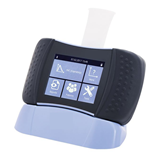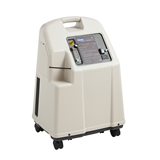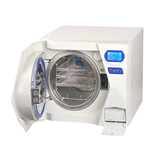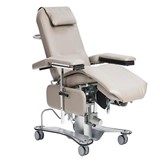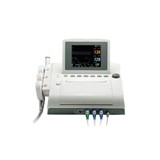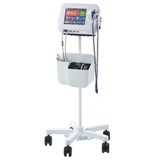Key Takeaways
- Price Range: Defibrillator monitors in Australia range from $4,000 to $25,000 depending on the type, features, and manufacturer.
- Types of Defibrillator Monitors: Includes Manual Defibrillators, AEDs (Automated External Defibrillators), and Monitor-Defibrillators with specific functionality for different settings.
- Maintenance Costs: Routine maintenance typically costs between $200 and $1,000 per year, depending on the device’s complexity and usage.
- Financing Options: Leasing, equipment financing, and rent-to-own schemes are widely available, especially for healthcare providers.
- Compliance: Defibrillators sold in Australia must meet TGA (Therapeutic Goods Administration) certification and IEC 60601 safety standards.
Introduction
Defibrillator monitors play a crucial role in emergency medical situations, allowing healthcare professionals to monitor and intervene in critical moments. With numerous options available on the market, understanding the key aspects such as types, features, pricing, and compliance is essential when purchasing this vital equipment in Australia.
Types of Defibrillator Monitors
Here’s a breakdown of the primary types of defibrillator monitors commonly available:
1. Manual Defibrillators
- Price Range: Typically ranges between $4,000 and $8,000.
- Description: Used by trained healthcare providers to deliver defibrillation manually. They provide full control over energy output.
- Best For: Emergency departments and critical care units.
- Key Features:
- ECG monitoring.
- Adjustable energy settings.
- Portable, battery-powered.
2. Automated External Defibrillators (AEDs)
- Price Range: Typically $1,200 to $3,500.
- Description: Designed for use by untrained individuals. AEDs automatically analyze a patient’s heart rhythm and advise if a shock is needed.
- Best For: Public spaces, schools, gyms, and offices.
- Key Features:
- Voice prompts for guidance.
- Portable and user-friendly.
- Includes a battery and electrode pads.
3. Monitor-Defibrillators
- Price Range: $8,000 to $25,000.
- Description: These devices combine real-time ECG monitoring and defibrillation capabilities, ideal for professional healthcare use.
- Best For: Ambulances, intensive care units (ICU), and advanced emergency care.
- Key Features:
- Real-time ECG display.
- Continuous heart monitoring.
- Advanced patient data storage and telemetry.
Factors Influencing the Price of Defibrillator Monitors
Several key factors influence the cost of purchasing a defibrillator monitor:
1. Device Type
- AEDs are generally more affordable than manual defibrillators and monitor-defibrillators, which offer more advanced features like continuous monitoring and advanced telemetry.
2. Brand Reputation
- Leading brands such as Philips, Medtronic, and Zoll tend to be more expensive due to their quality, reliability, and after-sales support.
3. Key Features
- Features like wireless connectivity, touchscreen displays, and built-in ECG monitoring capabilities can increase the price. A high-quality display for better clarity during emergency situations also impacts cost.
4. Warranty and Support
- Extended warranties and comprehensive customer support packages may increase upfront costs but could save money in the long run through reduced maintenance and repairs.
Operations of Defibrillator Monitors
Defibrillator monitors can perform the following key functions:
1. ECG Monitoring
- Defibrillator monitors typically provide continuous ECG readings to track heart activity. This feature is particularly crucial in medical settings, where detecting abnormal heart rhythms is essential for intervention.
2. Defibrillation
- Defibrillators provide an electric shock to the heart when a life-threatening arrhythmia is detected. The shock restores normal rhythm in the heart.
3. Data Management
- Many advanced monitors come equipped with the ability to store patient data, including ECG waveforms, shock history, and vital signs, for future reference and analysis.
Maintenance and Parts
Routine maintenance and the replacement of consumable parts are critical for ensuring the defibrillator monitor functions as expected.
1. Battery Replacement
- Batteries for defibrillators typically need replacing every 2-3 years. Depending on the model, battery replacement can cost between $150 and $500.
2. Electrode Pads
- Electrodes need to be replaced after use, especially with AEDs. Replacement costs can range from $50 to $200 per pair, depending on the device.
3. Routine Servicing
- It's recommended to service your defibrillator annually to ensure it meets safety standards. Service fees can range from $200 to $1,000 annually, depending on usage.
Financing Options for Defibrillator Monitors
Given the cost of defibrillators, various financing options are available for healthcare providers and organisations.
1. Leasing
- Leasing allows you to access the device for a fixed term and make payments over time, often with the option to purchase at the end of the lease period.
2. Equipment Financing
- Many healthcare facilities choose financing plans offered by manufacturers or third-party lenders, with loan terms typically ranging from 12 to 60 months.
3. Rent-to-Own
- Rent-to-own arrangements are another popular option, allowing you to rent a device with the option to purchase it later, spreading the cost over time.
Warranty and Support
When purchasing a defibrillator monitor, it’s crucial to understand the warranty and support options.
- Standard Warranty: Typically lasts 2-5 years and covers defects in materials or workmanship.
- Extended Warranties: Some manufacturers offer extended warranties for an additional cost, providing peace of mind in case of device failure.
- After-Sales Support: Ensure that the supplier offers excellent customer support, including troubleshooting, servicing, and training for healthcare professionals.
Compliance and Certification Considerations for Defibrillator Monitors in Australia
When purchasing a defibrillator monitor in Australia, ensuring the device meets strict safety and performance standards is essential. Below is a detailed breakdown of the key compliance requirements for defibrillators:
1. TGA (Therapeutic Goods Administration) Approval
In Australia, all medical devices, including defibrillators, must be approved by the Therapeutic Goods Administration (TGA). The TGA ensures that devices meet the required safety and quality standards before being sold.
2. IEC 60601 Certification
Many defibrillators are certified to IEC 60601, an international standard for electrical medical devices, ensuring they meet global safety requirements.
3. Australian Standards Compliance (AS 3200.1.0:2003)
Defibrillators must comply with AS 3200.1.0:2003, which sets the safety and performance requirements for medical electrical equipment in Australia.
4. Electrical Safety Compliance (AS/NZS 60950.1:2015)
Compliance with AS/NZS 60950.1:2015 ensures defibrillators meet electrical safety standards to prevent hazards during use.
5. Electromagnetic Compatibility (EMC) Compliance (AS/NZS CISPR 11)
Defibrillators must meet EMC standards such as AS/NZS CISPR 11 to prevent electromagnetic interference with other medical devices.
6. ISO 13485 Certification
Manufacturers of certified defibrillators follow the ISO 13485 quality management standard for medical devices, ensuring consistent product quality.
Common Questions Defibrillator Monitor Buyers Have
1. How often should I replace the electrodes and batteries?
- Electrodes should be replaced after each use or every 2-3 years, depending on the model. Batteries typically need replacement every 2-3 years or when the device indicates low power.
2. Can I use an AED on infants?
- Yes, most AEDs come with paediatric pads or settings to adjust the shock level for infants and children under 8 years old or weighing less than 25kg.
3. What happens if the defibrillator is used incorrectly?
- Defibrillators, especially AEDs, are designed to guide users through the process. If used incorrectly, the device will generally provide prompts or alarms, and it will only deliver a shock when necessary.
Conclusion
Purchasing a defibrillator monitor is a significant investment in patient safety, and selecting the right one requires understanding the various options, pricing, maintenance, and compliance factors. With the right device, healthcare providers can ensure quick and effective responses to life-threatening cardiac emergencies, saving valuable lives. By following the tips and considerations in this guide, you can make a confident, informed decision about purchasing a defibrillator monitor for your needs.




-160x160-state_article-rel-cat.png)



